_________________________________________________
YOU TUBE - http://www.youtube.com/user/TravelsWithLobo
---------------------------------------------------------------------------------
The Prince of Wales Northern Heritage Centre
http://pwnhc.learnnet.nt.ca/
I was drawn to the Prince of Wales Northern Heritage Centre by a promise of "the best buffalo burger in Yellowknife" being served in the Heritage Cafe of the museum.
At least that was the opinion of the chief of security at the Legislative Assembly.
While I normally have my big meal in the late evening, I was willing to make an exception for a taste of a succulent buffalo burger in the beautiful setting of the museum.
With my mouth watering in anticipation of this tasty morsel, I was naturally disappointed by the imminent closing of the restaurant at 14:00.
Museums, art galleries and shopping generally leave me feeling weak and listless. It was nevertheless my burning desire to learn more about the NWT which gained the upper hand and prompted me to walk through the halls of this museum.
Apart from the buffalo burger, one is drawn to this museum by its interesting architecture and its beautiful setting on the shores of Frame Lake. It is located halfway between downtown and the Legislative Assembly
According to its website, the Prince of Wales Northern Heritage Centre is dedicated to preserving the heritage and culture of the Inuit, Inuvialuit, Dene, Métis, and non-aboriginal peoples of the NWT.
The Northern Heritage Centre houses the territorial museum, the NWT Archives, and heritage programs which extend beyond the walls of the Centre.
Of special interest to me was the Aviation Gallery which has as its centre piece a mock up of a Fox Moth in preparation for flight. Nothing fires up the imagination more than the sight of the blow pot. It is a flame placed under the engine designed to raise the temperature of the motor sufficiently to allow it to turn over in the supposed extreme cold.
Considering how primitive aviation was in the those days, the early aviators were men of courage and skill as they risked their lives in the pursuit of opening up the Far North. Undaunted by extreme distances and climatic conditions, these brave men with a keen sense of adventure, were the "cowboys of the north". They played a key part in providing a means of transportation to the most remote part of this inhospitable region.
The walls surrounding the mock up have a display of all the various names and models of aircraft used in the north. My attention was once more drawn to the legendary DHC-6 Twin-Otter of de Havilland fame (Blog No. 12).
Another permanent exhibit was of equal fascination because it highlighted native culture in the form of a moose skin boat built by the Mountain Dene from Fort Norman in 1981. The building process and the subsequent voyage of the boat down the Keele River in the Mackenzie Mountains was a gripping story depicted in a 20 minute video.
Suspense was created since only one elder seemed to hold the knowledge of how to build a moose skin boat.
How can one person with knowledge take a group of younger members of the band and teach them not only how to make the boat but to safely navigate the large craft through the sometimes turbulent river? It is a fascinating story of learning how to bend wood, use leather strips to connect the pieces of the wooden structure and most importantly, how to make the seams of the various pieces of moose skin watertight.
The video is also a good teaching tool to convey the past traditional skills of the Dene and to reinforce the importance of "elders" in First Nations culture.
These concepts however seem to be in rapid decline.
Skills of hunting, trapping and even boat building have been diminished due to the introduction of "non-traditional foods" which have drastically changed the way of living for First Nations people.
In addition the values indoctrined by the current media have also diluted the respect once held for "elders" in native culture.
In conclusion the video is definitely a "feel good" story, if for no other reason than after all their efforts the moose skin boat ran the gauntlet of the Keele River successfully and now sits safely in the Prince of Wales Northern Heritage Centre for all to see.
Another item of fascination was an original Dogrib (name of First Nation people) caribou skin lodge which provided an important link to the teepee of the past. This structure is as much associated with the Dene as the igloo is to the Inuvialuit. The major difference between the two, other than the building material, was that the teepee was portable whereas the igloo was not.
Among the temporary exhibits was one with the irresistible title "The Bishop Who Ate His Boots" depicting the story of the Anglican Reverend Isaac Stringer and his wife who established a mission on Herschel Island in 1897.
(http://www.virtualmuseum.ca/Exhibitions/BishopStringer/engli sh/fullstory.html )
Other temporary exhibits included:
- 19th century Dene clothing and tools
- Inuvialuit (people of the Western Arctic) beluga whale stories
- the story of contemporary native seamstresses reproducint traditional Dene summer clothing
It was now around 16:30 and I was desperate for something to eat since I had missed out on the buffalo burgers. That translated into a ham and Swiss cheese sandwich and a coffee at the one and only Tim Hortons in town.
Feeling refreshed and invigorated it was now time to check out the golf course and airport.
_________________________________________________
YOU TUBE - http://www.youtube.com/user/TravelsWithLobo
---------------------------------------------------------------------------------
Yellowknife - Prince of Wales Northern Heritage Ct
Monday, August 06, 2007
 Yellowknife, Northwest Territories, Canada
Yellowknife, Northwest Territories, Canada
Other Entries
-
1Bear Alley - Highway 37 to Stewart/Hyder Alaska
Oct 04306 days prior Stewart BC, Canadaphoto_camera35videocam 0comment 2
Stewart BC, Canadaphoto_camera35videocam 0comment 2 -
2Stewart BC -- Historic Gateway to Alaska
Oct 05305 days prior Stewart BC, Canadaphoto_camera34videocam 0comment 2
Stewart BC, Canadaphoto_camera34videocam 0comment 2 -
3Stewart BC -- Ripley Creek Inn and the Estuary
Oct 05305 days prior Stewart BC, Canadaphoto_camera41videocam 0comment 0
Stewart BC, Canadaphoto_camera41videocam 0comment 0 -
4Hyder, Alaska -- Fish Creek and Salmon Glacier
Oct 12298 days prior Hyder, United Statesphoto_camera59videocam 0comment 3
Hyder, United Statesphoto_camera59videocam 0comment 3 -
5One of Nature's Great Stories
Oct 18292 days prior Adams River, Canadaphoto_camera63videocam 0comment 0
Adams River, Canadaphoto_camera63videocam 0comment 0 -
6Prince Rupert -- The New World Port
Jan 14204 days prior Prince Rupert, Canadaphoto_camera3videocam 0comment 0
Prince Rupert, Canadaphoto_camera3videocam 0comment 0 -
7Prince Rupert: Sinking of the Queen of the North
Apr 03125 days prior Prince Rupert, Canadaphoto_camera3videocam 0comment 0
Prince Rupert, Canadaphoto_camera3videocam 0comment 0 -
8On The Road Again - Northwest Territories
Jun 2047 days prior Prince George, Canadaphoto_camera1videocam 0comment 0
Prince George, Canadaphoto_camera1videocam 0comment 0 -
9Prince George to Dawson Creek - DAY 1
Jun 2146 days prior Dawson Creek, Canadaphoto_camera38videocam 0comment 0
Dawson Creek, Canadaphoto_camera38videocam 0comment 0 -
10Dawson Creek to Fort Nelson - Day 2
Jun 2344 days prior Fort Nelson, Canadaphoto_camera55videocam 0comment 0
Fort Nelson, Canadaphoto_camera55videocam 0comment 0 -
11The Liard Highway - Day 3
Jun 2344 days prior Fort Liard, Canadaphoto_camera73videocam 0comment 2
Fort Liard, Canadaphoto_camera73videocam 0comment 2 -
12Fort Simpson to Yellowknife - Day 4
Jun 2443 days prior Yellowknife, Canadaphoto_camera61videocam 0comment 0
Yellowknife, Canadaphoto_camera61videocam 0comment 0 -
13Yellowknife - The Old Town - Day 5
Jun 2641 days prior Yellowknife, Canadaphoto_camera41videocam 0comment 1
Yellowknife, Canadaphoto_camera41videocam 0comment 1 -
14Yellowknife - The New Town - Day 5
Jun 2641 days prior Yellowknife, Canadaphoto_camera41videocam 0comment 0
Yellowknife, Canadaphoto_camera41videocam 0comment 0 -
15Yellowknife - Frame Lake - Day 5
Jun 2641 days prior Yellowknife, Canadaphoto_camera53videocam 0comment 0
Yellowknife, Canadaphoto_camera53videocam 0comment 0 -
16Yellowknife - The Legislative Assembly
Aug 042 days prior Yellowknife, Canadaphoto_camera30videocam 0comment 1
Yellowknife, Canadaphoto_camera30videocam 0comment 1 -
17Yellowknife - Prince of Wales Northern Heritage Ct
Aug 06 Yellowknife, Canadaphoto_camera22videocam 0comment 0
Yellowknife, Canadaphoto_camera22videocam 0comment 0 -
18On The Road Again - Discovery Coast
Aug 126 days later Prince George, Canadaphoto_camera0videocam 0comment 0
Prince George, Canadaphoto_camera0videocam 0comment 0 -
19Discovery Coast Passage - Part 1 of 12
Aug 2014 days later Alexis Creek, Canadaphoto_camera55videocam 0comment 0
Alexis Creek, Canadaphoto_camera55videocam 0comment 0 -
20Discovery Passage - Part 2 of 12
Aug 2014 days later Tatla Lake, Canadaphoto_camera57videocam 0comment 2
Tatla Lake, Canadaphoto_camera57videocam 0comment 2 -
21Heckman Pass to Bella Coola - Part 3
Aug 2014 days later Tweedsmuir Provincial Park, Canadaphoto_camera62videocam 0comment 2
Tweedsmuir Provincial Park, Canadaphoto_camera62videocam 0comment 2 -
22Bella Coola - the Port - Part 4
Aug 2519 days later Bella Coola, Canadaphoto_camera26videocam 0comment 0
Bella Coola, Canadaphoto_camera26videocam 0comment 0 -
23The Discovery Coast Passage - Part 5
Aug 2721 days later Bella Coola, Canadaphoto_camera80videocam 0comment 3
Bella Coola, Canadaphoto_camera80videocam 0comment 3 -
24Port Hardy to Campbell River to Parksville
Aug 3024 days later Campbell River, Canadaphoto_camera2videocam 0comment 0
Campbell River, Canadaphoto_camera2videocam 0comment 0 -
25Cathedral Grove in MacMillan Provincial Park
Aug 3024 days later Coombs, Canadaphoto_camera4videocam 0comment 0
Coombs, Canadaphoto_camera4videocam 0comment 0 -
26Port Alberni - Gateway to the Pacific Rim - Part 8
Aug 3024 days later Port Alberni, Canadaphoto_camera2videocam 0comment 0
Port Alberni, Canadaphoto_camera2videocam 0comment 0 -
27Pacific Rim -- Tofino and Ucluelet - Part 9 of 11
Aug 3024 days later Tofino, Canadaphoto_camera13videocam 0comment 0
Tofino, Canadaphoto_camera13videocam 0comment 0 -
28Chemainus - Finding a Way to be Noticed - Part 10
Sep 0126 days later Chemainus, Canadaphoto_camera25videocam 0comment 0
Chemainus, Canadaphoto_camera25videocam 0comment 0 -
29Victoria - The Return - Part 11 of 12
Sep 0126 days later Victoria, Canadaphoto_camera48videocam 0comment 0
Victoria, Canadaphoto_camera48videocam 0comment 0 -
30Vancouver - Best Place to Live? Part 12 of 12
Sep 0126 days later Vancouver, Canadaphoto_camera41videocam 0comment 0
Vancouver, Canadaphoto_camera41videocam 0comment 0 -
31Land of the Midnight Sun
Sep 0328 days later Prince George, Canadaphoto_camera0videocam 0comment 0
Prince George, Canadaphoto_camera0videocam 0comment 0 -
32A L A S K A - Getting There - Part 1
Sep 0328 days later Prince George, Canadaphoto_camera14videocam 0comment 0
Prince George, Canadaphoto_camera14videocam 0comment 0 -
33The Stewart Cassiar Highway - Part 2
Sep 0530 days later Whitehorse, Canadaphoto_camera0videocam 0comment 0
Whitehorse, Canadaphoto_camera0videocam 0comment 0 -
34Catching Up and Changing Strategies - Again
Sep 0530 days later Whitehorse, Canadaphoto_camera0videocam 0comment 0
Whitehorse, Canadaphoto_camera0videocam 0comment 0 -
35Dawson Creek to Whitehorse - Part 3
Sep 0530 days later Whitehorse, Canadaphoto_camera20videocam 0comment 0
Whitehorse, Canadaphoto_camera20videocam 0comment 0

 Yellowknife, Northwest Territories, Canada
Yellowknife, Northwest Territories, Canada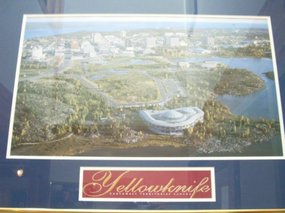
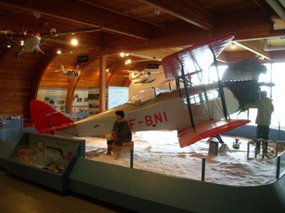
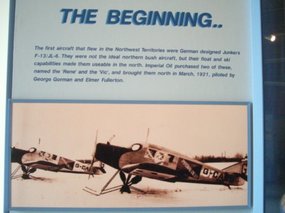
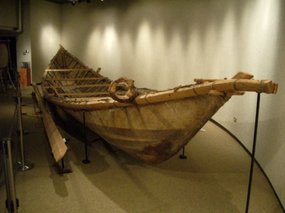



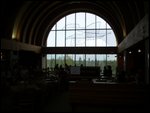
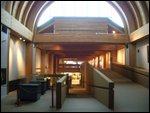
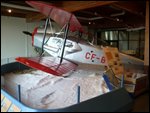
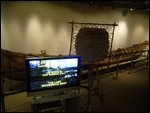
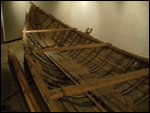
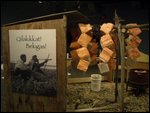
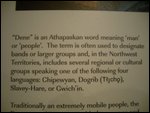
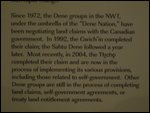
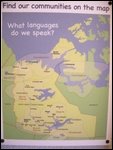

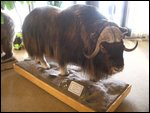
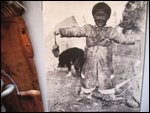
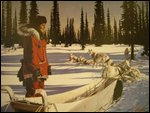

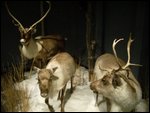
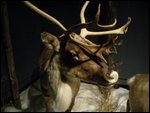
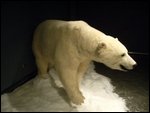
2025-05-22